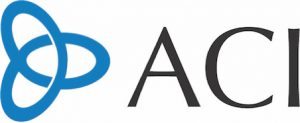Like many of our clients and colleagues, ACI is looking forward to reopening our office. We are taking into consideration how to ensure our staff remains safe and healthy, while also providing the expected highest level of service.
The past few months have presented challenges that were unexpected and unprecedented for most businesses. Everyone at ACI has been thoroughly impressed with our clients’ resiliency and determination in meeting recent challenges. Whether navigating the SBA’s Paycheck Protection Program or facing operational challenges of remote work environments, we have seen a great deal of resourcefulness and ingenuity. We are grateful to be part of these exceptional ongoing efforts.
Our plan is to return to ACI’s Wall Street office on July 6, after the long holiday weekend. The office has already been thoroughly sanitized and we will have masks, gloves and Purell at every workstation. We also purchased two medical-grade air purifiers to help maintain air quality and prevent the circulation of germs. All ACI employees will be tested for Covid-19 before returning and our plan will be to implement routine testing to minimize the risk of spread.
Our office kitchen will be open, but restricted to one person at a time.
To comply with social distancing, our staff members will alternate between working from home and the office. We have developed a robust work schedule to minimize the staffing in our office each day, while still keeping teams together to maximize efficiency and our ability to effectively meet our client’s needs. Half of our employees will be in the office and half will be working from home each day. We expect this will help keep everyone safe.
Welcoming New ACI Staff
Our office reopening comes just in time to welcome two new ACI hires. We have added a senior operations role to help support our growing number of carrying/clearing firm clients, who need not only a Principal Financial Officer (PFO) with a Series 27 license, but are now also required to have a Professional Operations Officer (POO) to comply with regulatory obligations. We have also hired an additional bookkeeper, who will both create support during the COVID pandemic, as well as provide us with expanded coverage for new client onboarding throughout the remainder of 2020.
“We wanted to bring our new accountant and bookkeeper on board as soon as the office reopened so they get to meet the rest of our team and begin to integrate into ACI’s corporate culture and operational infrastructure,” said ACI Managing Partner, Jay Gettenberg.
Lessons Learned
The COVID health and economic crisis has helped us improve our operations in ways we hadn’t anticipated.
We improved communication channels. We strengthened our in-house electronic communications to keep everyone connected and up-to-date regarding the coronavirus pandemic and how it will impact our day to day and ongoing business operations. In the past, with everyone in one office, our open-door policy kept everyone in the loop. This wasn’t sufficient with everyone working from home, so we made it an ongoing policy to communicate regularly via email with our employees during the lockdown and ensure a high level of transparency.
We adapted to working virtually. We ensured each and every employee had the infrastructure and capability to work both in the office and at their homes. We also provided training where needed so employees could maximize remote productivity. As we consider the potential reoccurrence of COVID in late 2020, our team is now positioned to serve our clients from multiple work environments, without delay or interruption of services.
We maximized environmental considerations. Working remotely, we have realized printing hard copies of multi-page documents may not be necessary. We are working toward a progressively more paperless infrastructure, which should help improve the environment and also better manage the outflow of documents to FINRA and PCAOB auditors in the future.
We doubled down on discretion. Working from home around family members provided an extra reminder that client and employee communications require confidentiality and discretion. We have improved many of our communication methodologies to ensure privacy is maintained.
ACI will continue to provide updates on our Resources page as we manage together through this challenging time. We hope everyone is taking proactive and precautionary measures to remain safe as the economy continues to reopen.
